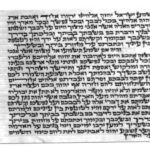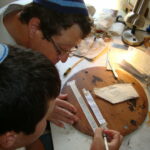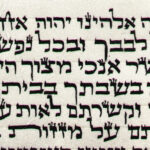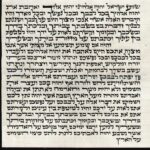What makes Kosher Tefillin ?
Much work goes into making a pair of kosher Tefillin , Mezuzah, etc.

![]()
I personally write the parchment scrolls. In order for Tefillin or Mezuza to be kosher it must be written on parchment from a kosher type of animal. The ink also needs to be kosher and black as a Raven and must be a certain consistency so that it does not get too absorbed into the klaf parchment so that it can be erased with a blade.

-

Tefillin Gassot Medium Size – תפילין גסות בגודל בינוני
$ 1,558.31Add to cart- ILS: 4,964.00₪
-

Regular Sized Rambam Tefillin Mehudarim
$ 1,698.32Add to cart- ILS: 5,410.00₪
-

Medium Rambam Tefillin Mehudarim
$ 2,108.62Add to cart- ILS: 6,717.00₪
-

Tiny Mezuzot on Klaf
$ 144.72Add to cart- ILS: 461.00₪
-

Sofer Stam – Scribe Workshop – Tefillin
$ 259.30Add to cart- ILS: 826.00₪
-

טלית רקמת יד מלאה
Read more -

Talit – Traditional Shawl Style Talit – With Techelet – Rambam 13 disks
$ 259.30Add to cart- ILS: 826.00₪
-

4 מזוזות מהודרות על קלף
Read more -

Rambam Mezuza 12 CM on Klaf Meubad or Gevil – Oak Gall
$ 156.96Add to cart- ILS: 500.00₪
-

Megillat Esther on Gvil
$ 2,518.91Add to cart- ILS: 8,024.00₪
-

Sefer Torah
Price range: $ 50,541.83 through $ 59,959.50Select options This product has multiple variants. The options may be chosen on the product page- ILS: 161,001.00₪ - 191,001.00₪
-

Mezuzot on Klaf
$ 90.10Add to cart- ILS: 287.00₪
Mezuzot and Tefillin must be written in order
Mezuzot and Tefillin must be written in order from the first letter to the last. Because of this, fixing them is often forbidden. The unkosher scrolls are buried in the Geniza.
Maimonides – Rambam style Parchment

I buy the lined parchments clean without writing as well as Tefillin Boxes, as I do not make these . Many hours of work go into making these, They are all hand made too. The parchments need to be treated. According to Maimonides – Rambam and the Talmud (Shabat 75 b) the parchment needs to be salted, treated with flower and then with Gall.
Most parchment today is not made according to Rambam, instead it is treated with lime. Those who make the Klaf according to Rambam today make a very superior parchment that is a pleasure to write on. It costs 3 times as much for this parchment. You can order Rambam Mezuzot and Tefillin directly from me.


The boxes of tefillin are also made of leather and are also completely hand made. Many Halachot apply to the Boxes of Tefillin. They need to be square, The pattern of the holes for the sewing must be square. It must have a whole for the straps to pass through and much more. The Tefillin put on the head needs to have four completely separate compartments. They must be sewed closed using a thread made of sinew.
The parchments need to rolled up and placed in the correct order in the boxes. The klaf parchments need to be wrapped in another piece of blank parchment and tied closed with hairs from the tail of a kosher animal.
Many man hours of work go into preparing the parchment, ink and Boxes of these holy articles. This is why you should be suspicious if a Mezuza costs less than you would pay a professional worker for 2 hours of work and a pair of Tefillin for 25 – 30 hours of work.
I have only touched on the many Halachot regarding Tefillin and Mezuzot. Much More has not been discussed.
I have previously discussed the meaning of the contents from the Torah wirtten on the parchments of Mezuzot and Tefillin, you can read them at : My milknhoney website














